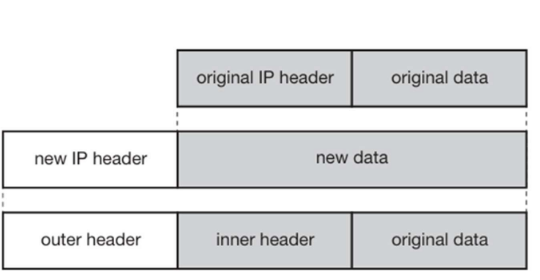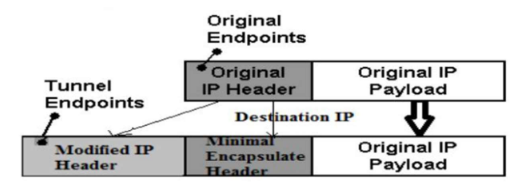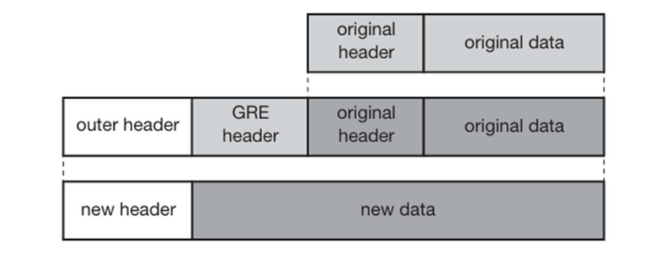Tunneling and Encapsulation in Mobile IP
Tunneling
Tunneling is a communication protocol that allows data movement from one network to another by exploiting encapsulation. It creates a virtual pipe for data packets between a tunnel entry point (like a Home Agent) and a tunnel endpoint (like a Care-of Address). This enables private network communications to be sent across public networks while potentially hiding the nature of the traffic.
Encapsulation
Encapsulation is the mechanism of taking a packet (consisting of a packet header and data) and putting it into the data part of a new packet. In simpler terms, encapsulation means sending a packet through a tunnel. The reverse process - extracting the original packet from the data part of another packet - is called decapsulation.
In Mobile IP, the Home Agent (HA) takes the original packet destined for the Mobile Node (MN), puts it into the data part of a new packet, and sets up a new IP header (outer header) to route the packet to the Care-of Address (COA).
Types of Encapsulation Techniques
1. IP-in-IP Encapsulation (RFC 2003)
- Mandatory implementation in Mobile IP
- Creates a tunnel between HA and COA
- The outer header contains:
- Source: IP address of HA
- Destination: Care-of Address
- Protocol type: IP-in-IP
- The inner header remains unchanged (original packet)
- Simple but effective method

2. Minimal Encapsulation
- More efficient than IP-in-IP as it avoids duplicating some fields
- Reduces overhead by eliminating redundant information from the inner header
- Still maintains the essential routing information

3. Generic Routing Encapsulation (GRE)
- More versatile encapsulation method (RFC 1701, RFC 2784)
- Includes additional fields in the GRE header:
- Checksum (optional)
- Protocol type
- Key (optional)
- Sequence number (optional)
- Routing information (optional)
- Offset (optional)
- Allows encapsulation of various protocol packets
- More flexible but includes more overhead

Each encapsulation technique offers different trade-offs between overhead, flexibility, and complexity. IP-in-IP is simpler and required by the Mobile IP standard, while GRE offers more features but with additional overhead. The choice depends on specific network requirements and constraints.